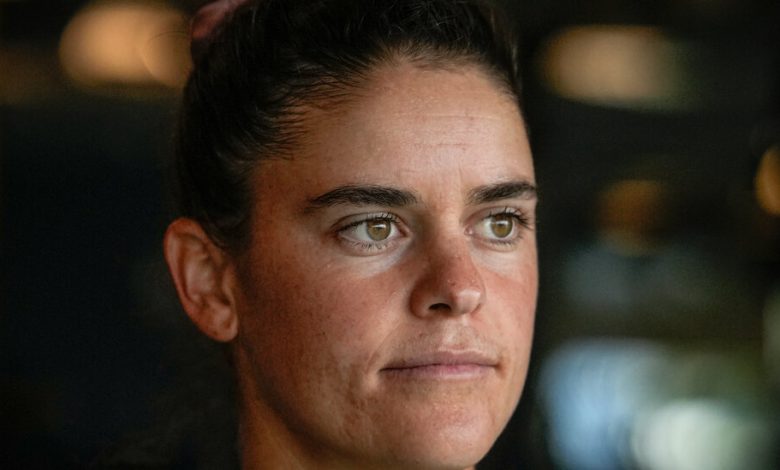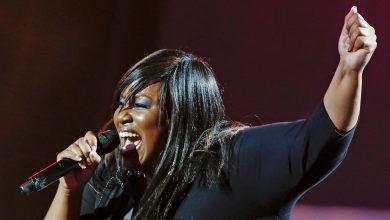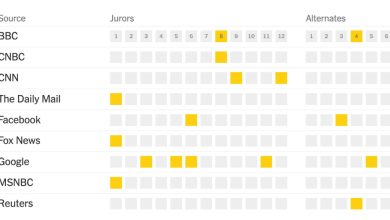Jennifer Brady, Finally Healthy, Tries to Get Back to Work

Even when the big success finally came, it hardly came easily for Jennifer Brady.
She made her breakthrough at the 2020 U.S. Open near the height of the coronavirus pandemic, reaching the semifinals amid strict public health measures and the silence of a vast Arthur Ashe Stadium without any paying spectators.
When she backed that performance up four months later by reaching the Australian Open final, she did it after spending two weeks in hard quarantine in a Melbourne hotel. She smacked tennis balls against a mattress that she had propped against a wall and pedaled a stationary bike in the bathroom with the door closed and a hot shower running to try to replicate the tournament’s often steamy conditions.
Her deep run was a remarkable, resilient effort that put her on the brink of the top 10 of the singles rankings. But as the world and her sport slowly returned to something closer to normal, Brady was nowhere to be seen on tour.
She was out of action for nearly two years with a chronic foot condition and a knee injury that, combined, sometimes left her, in her words, “in a very dark place,” curled up on the floor in tears, even looking at her troublesome left foot on occasion and wishing she could “just chop it off.”
Brady, who had played her last competitive match in August 2021, returned to action last week for an International Tennis Federation satellite tournament in Granby, Quebec, winning a round before losing in straight sets to Himeno Sakatsume, a Japanese player ranked 223rd.
Brady plans to return to the main WTA Tour next week in Washington, D.C., for the DC Open.
“It was unbelievable, just being out there,” Brady said in a telephone interview from Granby. “Just engaging and just having a crowd there, and people enjoying good tennis. I definitely missed this. I didn’t think I would be as comfortable as I was. I’m happy I was able to show people that I’m still here.”
‘It Seems Like There’s a Lot of Opportunity’
Though Brady no longer had a WTA ranking after her long layoff, she has a protected ranking that will allow her entry into 12 tour-level events. That does not count wild cards, and given her past success, she is likely to receive several, although she plans to use her protected ranking to enter the U.S. Open next month.

Brady said she missed playing in front of a crowd during her time away.Credit…Jacob Langston for The New York Times
With a thunderous forehand that often led her to practice with boys in her youth, Brady, 28, was long considered one of the most promising American players. She knows there are no guarantees of a successful comeback. She was aiming initially to return for the French Open in May. She had her hotel room and plane ticket booked but then suffered a new injury, a bone bruise in her right foot, in her final practice session before her planned departure.
As she returns this month, she senses an opening. She avoided watching much pro tennis in her long absence but she is well aware that Marketa Vondrousova recently became the first unseeded woman to win a Wimbledon singles title.
“The women’s game right now, it seems like anybody can win a Grand Slam tournament,” Brady said. “It seems like there’s a lot of opportunity.”
Brady no longer has a personal coach and is traveling instead with Kayla Fujimoto Epperson, a physical therapist. But as she prepared for her comeback in Orlando, she worked daily with Ola Malmqvist, the head of women’s tennis at the U.S.T.A., who has known Brady since she was a standout junior.
“I just really, really wish that she gets the chance to put her feet into everything again and see what happens,” Malmqvist said. “I think in her mind she definitely feels she can compete with the very best, and I hope she can stay healthy enough and practice enough. She’s not going to go four hours a day anymore because of her body, but she can still do enough to get the physicality she needs.”
The challenge for Brady has been learning to hold back. “It’s almost like I don’t trust myself,” she said. “I realized it’s more about staying healthy and training smarter instead of harder.”
She left U.C.L.A. after her sophomore year to turn professional in 2015. But she did not start to soar until she moved her training base to Germany in late 2019 and began working with the German coach Michael Geserer, who favored a high-volume, high-intensity approach.
She returned from the tour’s five-month pandemic hiatus in August 2020 and won her opening tournament in Lexington, Ky., foreshadowing her deep run to a U.S. Open semifinal with Naomi Osaka, the eventual champion.
She also lost to Osaka in the 2021 Australian Open final and then retreated to her hotel room again, emotionally and physical drained.
“I just closed the blackout curtains, and I just watched Netflix for, like, three days straight,” she said. “It just hit me.”
Instead of taking a break, she followed her plan with Geserer and went to the tournament in Doha, Qatar, in February 2021. “I just didn’t want to be there,” she said. “I love competing, but I just didn’t want to compete. Mentally, I was absolutely fried.”
She had already experienced some minor foot pain, but in March as she prepared for the Miami Open, she said, she woke up in the “middle of the night with a sharp, stabbing pain” in the sole of her left foot.
She was diagnosed with plantar fasciitis but pressed on. By May, when she played in the Italian Open, she woke up after a match and said she “couldn’t walk.”
She split with Geserer, in part because she felt they had pushed too hard.
“There was no drama,” she said. “It was just a little too much; too much structure at that time period.”
She went to the French Open and was in so much pain during her first-round victory over Anastasija Sevastova that she cried during the match. She managed to win her second-round match with Fiona Ferro but began experiencing back spasms in her third-round loss to Coco Gauff and stopped after losing the first set.
“I was compensating for the foot,” Brady said. “So, I started having pain everywhere.”
‘Like Stepping on a Porcupine’
She skipped the grass-court season, received a cortisone injection and a platelet-rich plasma injection in her foot but lost in the first round at the Tokyo Olympics and returned to the U.S. to try to get ready for the 2021 U.S. Open.
“Some mornings I would wake up, and I’d be like, ‘Oh my God, I’m healed, like, it’s gone!’” she said. “And then I’d go on court, and I’d be like, ‘Damn, it’s not.’ I also had a ton of nerve compression, nerve pain. It wasn’t just plantar fasciitis. So, it was like stepping on a porcupine every step, and I was so sensitive that I would have to take my shoe and sock off because my foot would be so hot. It felt like somebody was lighting a match on my skin.”
She played the Western and Southern Open on painkillers and was feeling good in her second-round match against Jelena Ostapenko before experiencing new pain in her right knee. She remembers running for a short ball late in the second set and feeling “like an explosion in my left heel.”
“I immediately couldn’t put weight on it,” she said.
She retired from the match and soon withdrew from the U.S. Open. She had a stress fracture in her right knee and would later discover that she also had a partial tear in her left plantar fascia. She had right knee surgery in March 2022 to repair cartilage damage but still had lingering foot pain.
“Anytime I would feel pain, I would freak out because I’d be like, it’s back to where it was,” she said. “And I’d lose sleep over it; so many negative thoughts start rolling in the back of my head.”
There has been angst about finances. Brady’s time near the top in women’s tennis was brief and though she has earned more than $4.6 million in prize money, pro tennis has plenty of overhead. And her medical bills, even with insurance, have been stacking up during her long layoff.
“I don’t want to blow through all my money,” she said.
Brady added: “When can I start doing my job?”
The answer, at last, is now.




